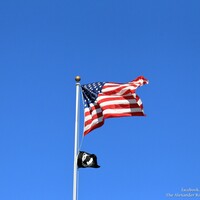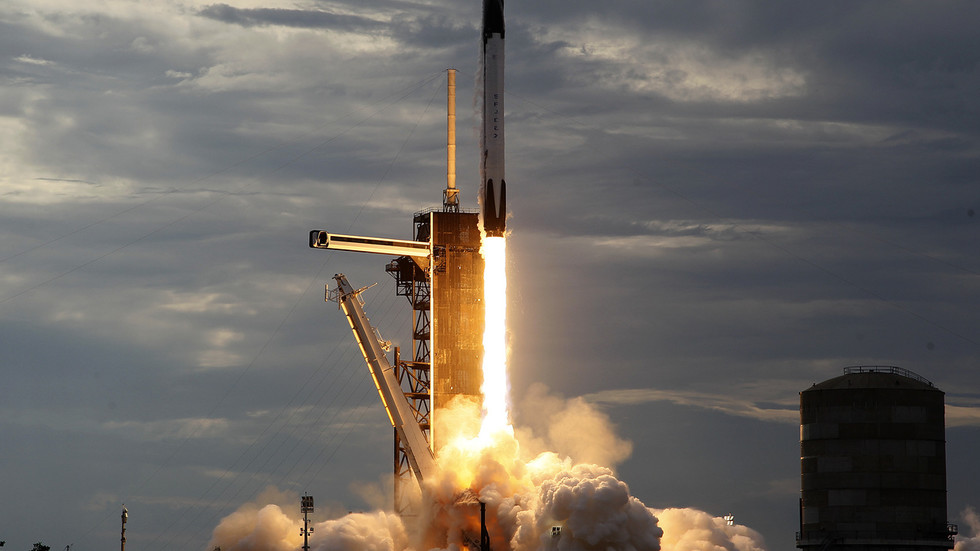University of Southampton - Scientists closer to finding quantum gravity theory after measuring gravity on microscopic level:
https://phys.org/news/2024-02-scientists-closer-quantum-gravity-theory.html
#Microgravity #QuantumGravity #Gravity #Levitation #Photonics #Physics
People
Circles
Posts
RT - First female Saudi astronaut heads to space:
https://www.rt.com/news/576699-saudi-woman-space-iss/
#AxiomSpace #SpaceX #Falcon9 #Freedom #SpaceStation #ISS #Microgravity #RayyanahBarnawi #CommercialSpaceflight #Spaceflight
NASA
May 20, 2022
NASA Astronaut Thomas Marshburn Reads “Goodnight Moon” in Space and Mark Vande Hei Answers Questions
Watch as astronaut Thomas Marshburn reads out loud from the children’s book “Goodnight Moon” by Margaret Wise Brown while floating in microgravity aboard the International Space Station. Also, Astronaut Mark Vande Hei joins Thomas to answer questions sent to them. This video was featured as a part of the Crayola and Harper Kids “Read Along, Draw Along” event to commemorate the 75th anniversary of the book’s publication. Astronauts will return to the Moon as part of the Artemis program. Artemis I will be an important step in NASA’s goal to land the first woman and the first person of color on the Moon and establish long-term lunar exploration. This mission will be the first flight test of the integrated Orion spacecraft and Space Launch System rocket.
https://youtu.be/fBamDgg4FPE

Watch as astronaut Thomas Marshburn reads out loud from the children’s book “Goodnight Moon” by Margaret Wise Brown while floating in microgravity aboard the...
www.youtube.com
Videos
People
Circles
Videos
Posts
University of Southampton - Scientists closer to finding quantum gravity theory after measuring gravity on microscopic level:
https://phys.org/news/2024-02-scientists-closer-quantum-gravity-theory.html
#Microgravity #QuantumGravity #Gravity #Levitation #Photonics #Physics
RT - First female Saudi astronaut heads to space:
https://www.rt.com/news/576699-saudi-woman-space-iss/
#AxiomSpace #SpaceX #Falcon9 #Freedom #SpaceStation #ISS #Microgravity #RayyanahBarnawi #CommercialSpaceflight #Spaceflight
NASA
May 20, 2022
NASA Astronaut Thomas Marshburn Reads “Goodnight Moon” in Space and Mark Vande Hei Answers Questions
Watch as astronaut Thomas Marshburn reads out loud from the children’s book “Goodnight Moon” by Margaret Wise Brown while floating in microgravity aboard the International Space Station. Also, Astronaut Mark Vande Hei joins Thomas to answer questions sent to them. This video was featured as a part of the Crayola and Harper Kids “Read Along, Draw Along” event to commemorate the 75th anniversary of the book’s publication. Astronauts will return to the Moon as part of the Artemis program. Artemis I will be an important step in NASA’s goal to land the first woman and the first person of color on the Moon and establish long-term lunar exploration. This mission will be the first flight test of the integrated Orion spacecraft and Space Launch System rocket.
https://youtu.be/fBamDgg4FPE

Watch as astronaut Thomas Marshburn reads out loud from the children’s book “Goodnight Moon” by Margaret Wise Brown while floating in microgravity aboard the...
www.youtube.com
May 3, 2022
The Scientific Journey of NASA’s SpaceX Crew-3 Aboard the International Space Station
After more than six months aboard the International Space Station, the astronauts of NASA’s SpaceX Crew-3 mission are returning home. The four crew members -- NASA astronauts Kayla Barron, Raja Chari, and Tom Marshburn, and ESA (European Space Agency) astronaut Matthias Maurer -- will travel back to Earth inside a SpaceX Crew Dragon capsule.
These crew members contributed to hundreds of scientific investigations and technology demonstrations while aboard the orbiting laboratory. This valuable research helps to prepare humans for future space exploration missions while generating numerous innovations and benefits for humanity on Earth.
Here is a look at some of the scientific milestones accomplished during the Crew-3 mission.
Download full-resolution versions of all photos in this article.
Culturing cotton
image of an astronaut working on an experiment
Credits: NASA
The space agriculture study Plant Habitat-05 explored genetic expression in cotton cell cultures to learn more about the process of plant regeneration, potentially improving crop production on Earth. In the top image, Barron works inside the Life Science Glovebox conducting operations for the investigation. In the bottom image, Chari performs the final cotton harvest.
Flame test
image of an astronaut working on an experiment
Credits: NASA
Chari replaces hardware inside the Combustion Integrated Rack (CIR) that supported the Advanced Combustion via Microgravity Experiments (ACME). ACME was a series of six independent studies of gaseous flames seeking to improve fuel efficiency, reduce pollution, and promote spacecraft fire prevention.
Next in line
image of an astronaut working on an experiment
Credits: NASA
After the ACME experiments wrapped up, Crew-3 installed the Solid Fuel Ignition and Extinction (SoFIE) facility. This hardware will continue combustion research on station, providing a wide range of solid-material combustion and fire suppression studies. Here Marshburn carries the Combustion Chamber, the main component of CIR, to prepare the research device for SoFIE.
Materials science
image of an astronaut working on experiment hardware
Credits: NASA
Maurer swaps samples inside the Materials Science Laboratory, a physics research platform that enables observation of metals, alloys, polymers, semiconductors, ceramics, crystals, and glasses to discover new applications for existing materials and new or improved materials.
Studying the sequence
image of an astronaut working on an experiment
Credits: NASA
Chari sequences DNA from bacteria samples using the BioMole Facility to help scientists understand the microbial environment on the International Space Station. This technology could be used to monitor microbes aboard future spacecraft, supporting missions such as Gateway and Mars transits that lack the capability to return samples to Earth for analysis.
Sprouting science
image of small plants being studied for an experiment
Credits: NASA
This image taken by Barron shows the MVP-Plant-01 Petri plates with seedlings inside. The study profiles and monitors the development of plant shoots and roots in microgravity in order to understand the molecular mechanisms and regulatory networks behind how plants sense and adapt to changes in their environment.
Busy bee
image of an astronaut working with flying robots
Credits: NASA
Maurer sets up an Astrobee robotic free-flyer for the ReSWARM experiment in the station’s Kibo module. The robotics demonstration tests autonomous coordination among multiple robots, robots and cargo, and robots and their environments. Such operations could support a variety of robotic operations, including autonomous docking and repairs, on future space missions.
Spice in space
image of an astronaut observing a plant experiment
Credits: NASA
Marshburn looks at chiles growing inside of the Advanced Plant Habitat. Crew-3 performed the second harvest of chiles aboard the International Space Station for the Plant Habitat-04 experiment. This plant experiment, one of the station’s most complex to date because of the long germination and growing times, will add to NASA’s knowledge of growing food crops for long-duration space missions.
Prepping for panels
image of two astronauts during a spacewalk
Credits: NASA
Barron (top) and Chari (bottom) are pictured shortly after exiting the U.S. Quest airlock beginning a six-hour 54-minute spacewalk to set up the International Space Station for its next roll-out solar array. These solar arrays, originally tested as a part of a space station experiment, will be used on the Gateway orbital outpost at the Moon.
Exploring physics
image of an astronaut working with an experiment
Credits: NASA
Marshburn works on the SUBSA-BRAINS space physics experiment, which examines differences in capillary flow, interface reactions, and bubble formation during solidification of brazing alloys in microgravity. Brazing technology bonds similar materials (such as an aluminum alloy to aluminum) or dissimilar ones (such as aluminum alloy to ceramics) at temperatures above 450°C. It is a potential tool for construction of human space habitats and manufactured systems as well as to repair damage from micrometeoroids or space debris.
Contacting Chile
image of an astronaut using a Ham radio
Credits: NASA
Chari conducts a ham radio session aboard the International Space Station with students from Temuco, Chile. ISS Ham Radio engages students, teachers, parents, and other members of the community in direct communication with astronauts via ground-based amateur radio units. This experience helps inspire interest in science, technology, engineering, and math.
New ways to build
image of an astronaut working on an experiment
Credits: NASA
Maurer explores how concrete hardens in microgravity, which could inform future space construction techniques on lunar and planetary surfaces. Maurer conducted research operations for Concrete Hardening in the portable glovebag with a variety of cement mixtures observing how pores, bubbles, and crystals develop as the samples harden.
An archaeological dig in space
image of an astronaut working on an experiment
Credits: International Space Station Archeological Project/NASA
Barron snaps pictures of a sample “pit” aboard station as part of the SQuARE experiment. This study was adapted from the standard archaeological technique on Earth called the “shovel test pit” and tracks the use and movement of objects in several sample sites throughout the orbiting laboratory. What we learn could inform design of future space habitats.
A long-duration mission
image of an astronaut crew
Credits: NASA
Crew-3 spent most of their time aboard the space station accompanied by Mark Vande Hei (pictured top right) who recently completed the longest single spaceflight by a NASA astronaut. His mission supported research into how the human body changes during extended stays in space, contributing to further exploration into the solar system.
The window to the world
image of two astronauts gazing out cupola windows
image of an astronaut peeking out the window of the cupola
Credits: NASA
The seven-windowed cupola of the space station serves as a place to gaze back at our planet as well as take photographs of Earth. These photographs provide important data for scientists monitoring how Earth is changing and for assisting with disaster relief efforts. In the top image, Marshburn and Vande Hei peer back at our planet. In the bottom image, Barron is seen inside the cupola.
After returning to Earth, the astronauts of Crew-3 will continue to serve as volunteer human research subjects, providing valuable physiological data to advance space medicine and support future human spaceflight missions.
WATCH: NASA’s SpaceX Crew-3: Mission for Science
https://www.nasa.gov/mission_pages/station/research/news/scientific-journey-on-ISS-crew-3



